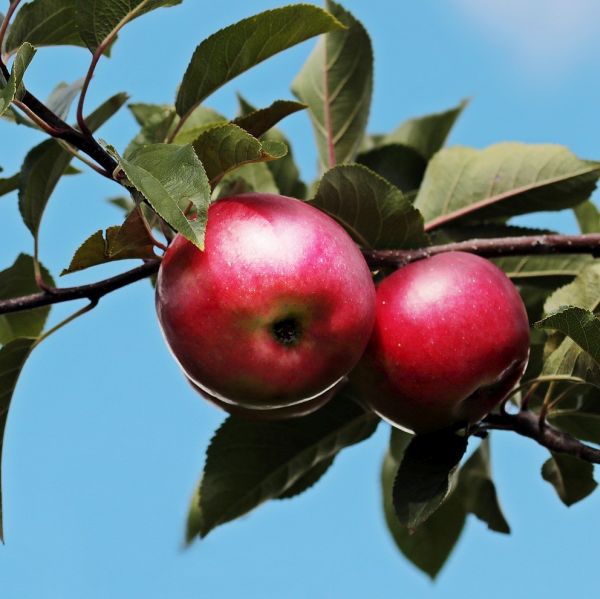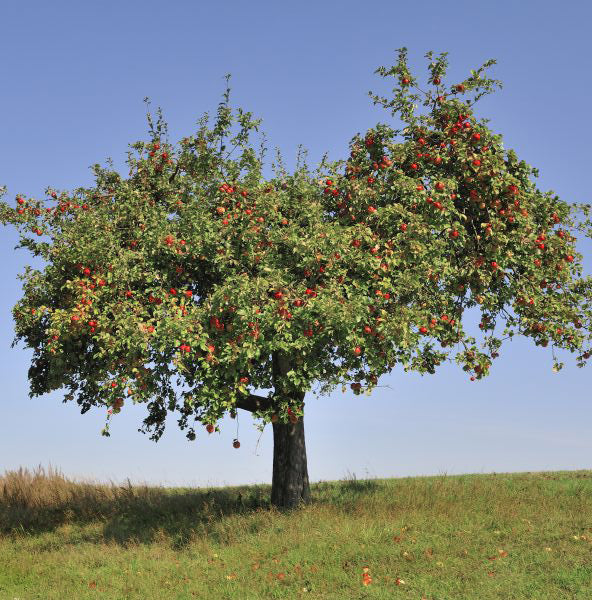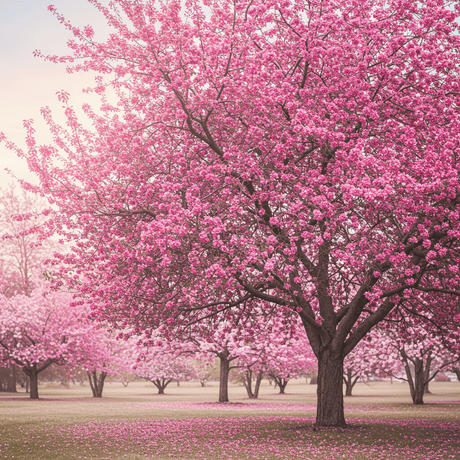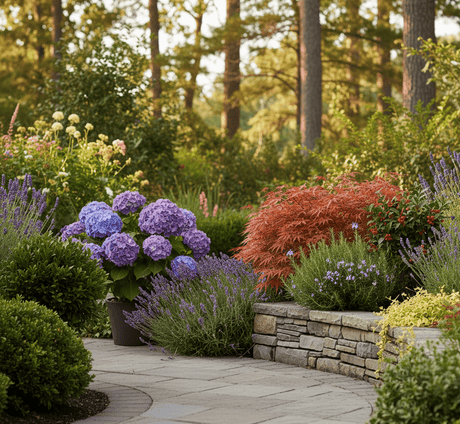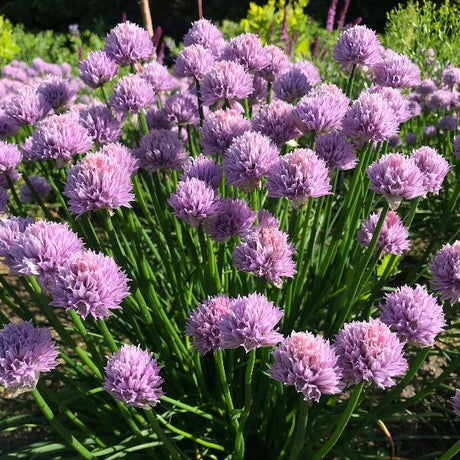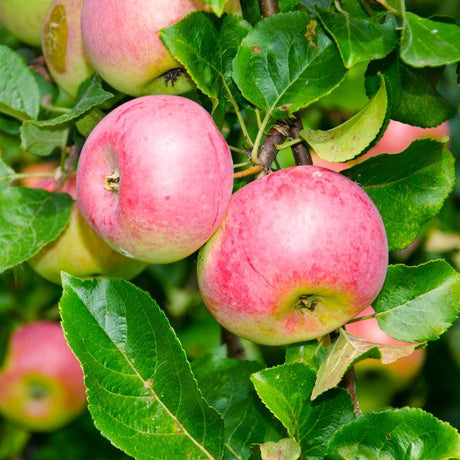Empire Apple Tree
Malus 'Empire'
- Stay Protected with Plant Sentry ™
Empire Apple Tree - #3 Container 4-5 Feet is backordered and will ship as soon as it is back in stock.
Plant Sentry™
Plant Sentry™

Plant Sentry™ Protected
Your order is protected by our compliance system that:
- Prevents restricted plants from shipping to your state
- Ensures plants meet your state's agricultural requirements
- Protects gardens from invasive pests and diseases
Delivery and Shipping
Delivery and Shipping
Delivery and Shipping
Fast, Safe Plant Delivery
Ships in 3-4 business days • Tracking provided • Weather protected
| Under $50 | $9.99 |
| $50 - $99.99 | $14.99 |
| $100 - $149.99 | $16.99 |
| $150 - $198.99 | $24.99 |
| $199+ | FREE |
✓ Zone-specific timing • ✓ Professional packaging • ✓ Health guarantee
Understanding Plant Options
Nature Hills offers plants in two main formats:
- Container Plants: Grown in pots with soil, sized by container volume and plant age
- Bare Root Plants: Dormant plants without soil, sized by height measurements
Container Plant Sizes
Container sizes indicate plant age and growing capacity rather than liquid volume equivalents. Our containers follow industry-standard nursery "trade gallon" specifications, which differ from standard liquid gallon measurements.
Young Plants (6 months to 18 months old)
| Container Size | Actual Volume | Metric Equivalent |
|---|---|---|
| 2" x 2" x 3" | 0.18 - 0.21 dry quarts | 0.20 - 0.23 dry liters |
| 4" Container | 0.31 - 0.87 dry quarts | 0.35 - 0.96 dry liters |
| 4.5" Container | 0.65 dry quarts | 0.72 dry liters |
| 6" Container | 1.4 dry quarts | 1.59 dry liters |
| 1 Quart | 1 dry quart | 1.1 dry liters |
| 5.5" Container | 1.89 dry quarts | 2.08 dry liters |
Established Plants (18 months to 2.5 years old)
| Container Size | Actual Volume | Metric Equivalent |
|---|---|---|
| 2 Quart | 2 dry quarts | 2.2 dry liters |
| #1 Container | 2.26 - 3.73 dry quarts | 2.49 - 4.11 dry liters |
| 5" x 5" x 12" | 3.5 - 4.3 dry quarts | 3.85 - 4.74 dry liters |
Mature Plants (2-4 years old)
| Container Size | Actual Volume | Metric Equivalent |
|---|---|---|
| #2 Container | 1.19 - 1.76 dry gallons | 5.24 - 7.75 dry liters |
| #3 Container | 2.15 - 2.76 dry gallons | 8.14 - 12.16 dry liters |
Large Plants (3-5 years old)
| Container Size | Actual Volume | Metric Equivalent |
|---|---|---|
| #5 Container | 2.92 - 4.62 dry gallons | 12.86 - 20.35 dry liters |
| #6 Container | 5.25 - 6.01 dry gallons | 23.12 - 26.42 dry liters |
| #7 Container | 5.98 - 6.53 dry gallons | 26.34 - 28.76 dry liters |
Bare Root Plants
Bare root plants are sold by height from the root system to the top of the plant. Plants may exceed minimum height requirements.
Common Sizes:
- Trees: 1 foot, 2 feet, 3 feet, 4 feet, 5 feet, 6 feet
- Shrubs & Perennials: 1 foot, 18 inches, 2 feet
Important Notes
Container Volume Specifications
- Trade Gallon Standard: Our containers follow industry-standard "trade gallon" specifications established by the American National Standards Institute (ANSI Z60.1) for nursery stock
- Volume Variations: Actual soil volume may vary due to plant root systems and growing medium settlement
- Age Indicators: Container size primarily indicates plant age and maturity rather than liquid volume equivalents
Growing Conditions
- Plant size can vary based on variety and growing conditions
- Container size helps indicate plant maturity and establishment level
- Larger containers generally mean more established root systems and faster landscape establishment
Seasonal Availability
- Bare root plants are available seasonally when dormant
- Container plants are available throughout the growing season
- Specific varieties may have limited availability in certain sizes
Questions?
For questions about specific plant sizes or availability, please contact our plant experts who can help you choose the right size for your landscape needs.
Plant Highlights
Empire Apple Tree highlights at a glance!
-
Botanical Name
-
Brand
-
Growing Zones4, 5, 6, 7, 8, 9
-
Growth RateModerate
-
Mature Height
-
Mature Width
-
Leaf Color
-
Flower Color
-
Fall Color
-
Pollinator FriendlyYes
-
Pollinator Required
-
Bloom PeriodLate Spring
-
FragrantYes
Characteristics
Where To Plant
When To Prune
- Late Winter
Water & Moisture Needs
- Moderate
Sunlight Needs
Soil Needs
- Widely Adaptable
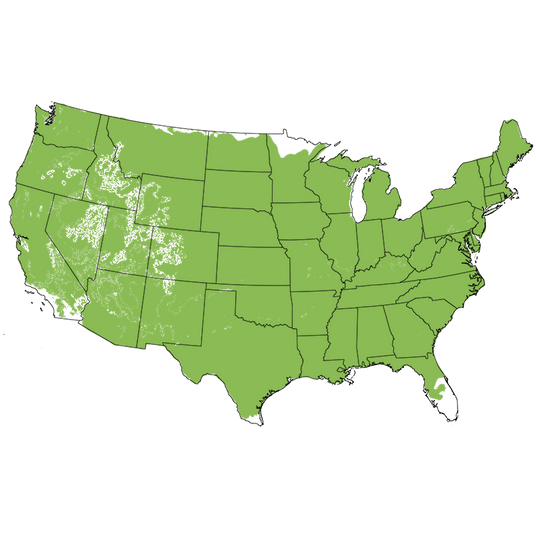
Growing Zones
With the Empire Apple Tree (Malus 'Empire'), you get the best two of the world's most beloved Apple varieties: the Red Delicious and the McIntosh. Because it offers the best characteristics of both of its parents, you know this is an apple that won't remain in your fruit bowl for long. It offers longer-lasting fruit and a super sweet taste with a crisp snap of firm flesh inside.
You'll praise the crimson red skin and its dove white flesh. The taste is the one you remember from your childhood - sweet and desert-like, easily preferable to the snacks that you might reach for in the vending machine.
Nothing is better than the taste of apples picked fresh from the tree. You also get the added benefit of knowing what does or does not go into your apples before they made their way into your family's hands and it's also a great investment in your family's health and culinary pleasure for years or even generations to come.
Planting and Application:
At maturity, this compact tree is sized just right for the suburban or urban garden, but you can keep it even smaller with a simple summer prune. Like most Macintosh offspring, it is happy to set many, many little apples for you if you let it. You'll want to thin out the crop each year to get bigger and better apples.
The early spring white blossoms are fragrant and a favorite of bees, plus the shade producing lush green leaves all growing seasons end the year with some yellow fall color! This all-purpose apple is excellent as a snack for fresh eating, in fruit salads, minced into sauces, ciders, baking and it even freezes well!
- Vivid Red Delicious Fruit
- Bright White Flavorful Flesh
- Fragrant White Blossoms
- Compact-Sized Tree
- Fresh Eating, Baking & Sauces
#ProPlantTips for Care:
Empire is an easy-to-grow tree that remains a steadfast favorite among growers. It requires full sun and cool autumn nights for optimal growth. While it is partially self-fertile, you'll want to give it a pollination partner to increase your fall yield. Hardy USDA zones 4 - 9.
Empire Apple Trees are a fan favorite and a reliable producer. Order your own today from NatureHills.com and pick up its pollinator while you're at it!
Empire Apple Tree Frequently Asked Questions
When to Plant Empire Apple Trees
Planting Bareroot trees as soon as you can dig a hole in spring and until hot weather, the earlier the better. Plant container Apple trees throughout the growing season with complete success - that is the benefit of container plants - to extend the planting season. Your County Agricultural Extension Office is a great resource for first and last frost dates in your area.
How to Plant Empire Apple Trees
Dig a large hole only as deep as needed to accommodate the bareroot or container root ball, and twice as wide. Add Nature Hills Root Booster to speed root establishment. Remove the pot or bag and situate it into the hole so the top of the soil (soil line if bareroot), is level with the new location's soil being careful not to plant too deep. Water in again very well and backfill with the same soil you dug up, tamping down gently to ensure there are no air pockets.
Top off with a 3-4 inch thick layer of Arborist mulch. Consider staking your tree to keep its trunk growing straight for the first year to ensure it stands tall against strong winds and drifting snow.
When to Prune Empire Apple Trees
Trim off any broken branches from delivery as soon as you take them out of the box. Prune and trim apple trees while dormant, in late winter or early spring, before you see new growth.
How to Prune Empire Apple Trees
Dormant prune to:
- Remove any double leaders or narrow crotch angles
- Eliminate any crossing branches
- Thin interior branching and leave the fruiting spurs and strong branches in place opening up the canopy
- Branching at least 24-36 inches above the ground
Prune Apple trees in the summer to:
- Control size and shape by reducing the length of longer new growth on vigorous trees
- Remove water sprouts on the main trunk or older branches in the crown
- Remove suckers at the base of the trunk
- Thin fruit during heavy years on established trees
How to Care for Empire Apple Trees
Growing an apple tree is easy when proper soil, good drainage, attention to moisture, and regular fertility are maintained. Once you've chosen an apple tree that works for your climate, in the size you need for your landscape, and its pollinator (if needed), then you've accomplished half the battle!
- Apple trees do best in full sun and well-drained soil
- Water your apple trees when it gets dry - especially during the fruit production stage, and drought periods to keep it stress-free
- Use arborists' wood chips to mulch over the roots of your apples and have your soil tested to see what your soil may be lacking before adding fertilizers
- Maintenance pruning and shaping
Apple trees will tolerate a wide range of soils, so long as water and nutrients are not limited and the pH level is adequate.
How to Fertilize Empire Apple Trees
For the first year, water alone is most important. It is always best to get a soil test to see what your soil is lacking before adding more fertilizers. Once established, a fertilizer routine may be beneficial. We do offer some excellent slow-release organic options, applied according to the package directions.
Fruit trees need more phosphate and it's possible to apply too much nitrogen which affects the soil's pH. Test soil acidity or alkalinity using a pH Tester.
Fertilize in spring when you first see new growth emerging.
- Don't overdo it
- Phosphates are your friends
- Pay attention to pH in areas with extremely high or low soil pH
- Follow the directions
Empire Apple Tree Pollinating Info
Empire is not self-fruiting and needs a pollinating partner. Pair with one of these varieties:
- Gala Apple Tree
- Enterprise® Apple Tree
- Golden Delicious Apple Tree
- Honeycrisp Apple Tree
- Red Jonathan Apple Tree
Harvest Times for Empire Apple Trees
Empire’s are typically ready to harvest in August.
Early-Season? Mid-Season? Late-Season? The terminology can be confusing for new apple tree growers. Weather, climate and your tree determine when it's ripe.
For Apples:
- Early-season is usually June-July
- Mid-season can be August-September
- Late-season can be from late September-November
The growing season consists of spring, summer, and fall, and varies with climate and weather. Areas with longer growing seasons in the warmer hardiness zones can greatly affect the harvest times for each particular apple variety grown in your area.
Dedication to the Delicious Empire Apple
The Empire Apple is a classic example of natural selection and how long it takes to get a great new variety to market. The Empire apple is named after the Empire State of New York and was originally a project started by a Cornell University fruit nutritionist, Lester C. Anderson.
Anderson conducted his own research on different personal orchards, one being an orchard of Red Delicious and McIntosh apples. He was looking for the best attributes of these two successful varieties and made seed available to the University. His effort would result in one of the most successful apple varieties to come out of Cornell University Apple research program.
In 1945, A.J. Heinicke, the director of Cornell's acclaimed Agricultural Experimental Station in Geneva, went to Lester's orchard that was solely Red Delicious and McIntosh Apples. Heinicke had been the director of the Geneva research station since 1921 and was a noted pomology researcher whose work in how to maintain healthy apple trees would go on to influence generations of apple scientists.
From this orchard Heinicke harvested a large quantity of fruit, removed the seed, ran tests to determine the viability and planted out thousands of seedlings. In 1947, about 1200 of the seedlings were selected for further review and planted out at the Geneva station. Then another review and selection done in 1954 with these selections being reviewed for another 12 years.
Finally, a contemporary of Heinicke, Roger Way, who had been with the Geneva program since 1949, made another selection in 1966 and from this selection, seedling #45500-5, became the Empire Apple that was to be released at the New York State Fair in 1966.
Cornell introduced the Empire Apple for the first time, six years after A.J. Heinicke retired. He did however remain active with the University during his retirement and saw the introduction of what would be hailed as the most successful apple introduction to come out of Cornell's Geneva research program; taking 20 years from conception to introduction. No information is found to say if Lester Anderson would see his cross go into production. Heinicke would pass in February of 1971.

